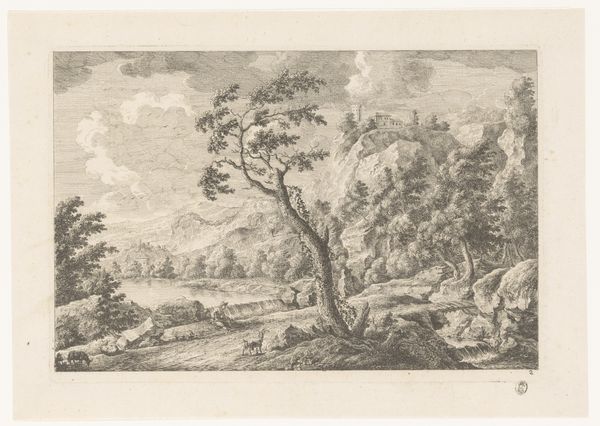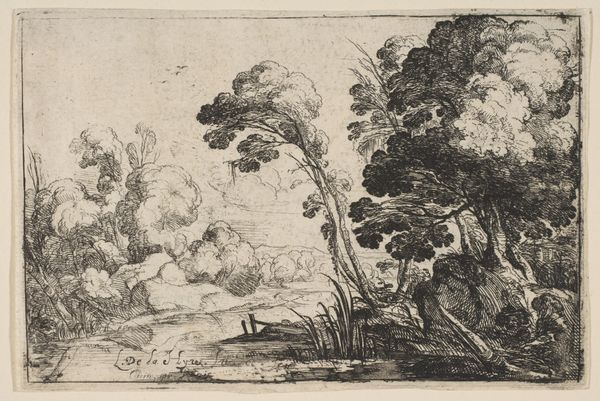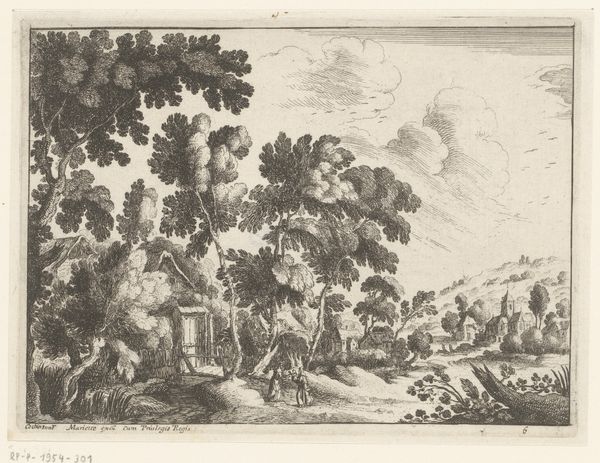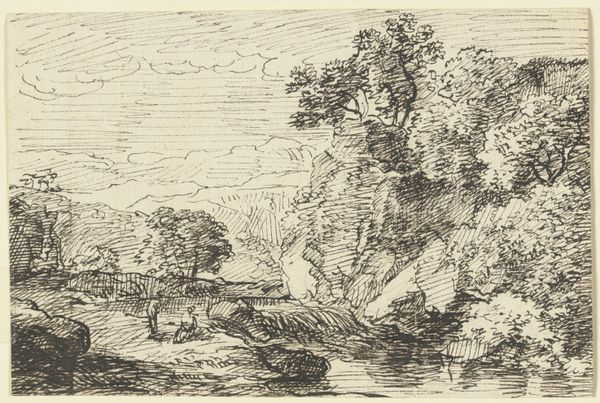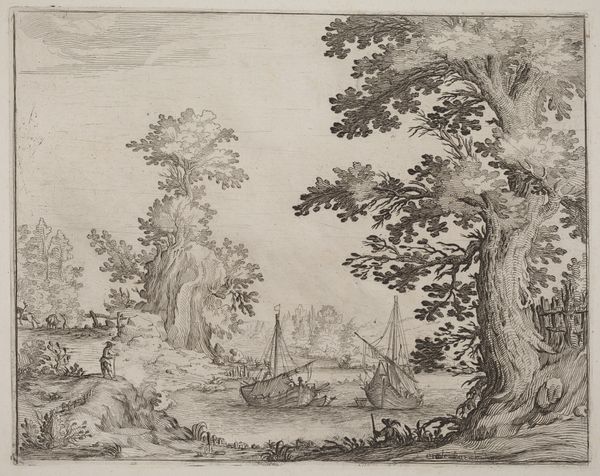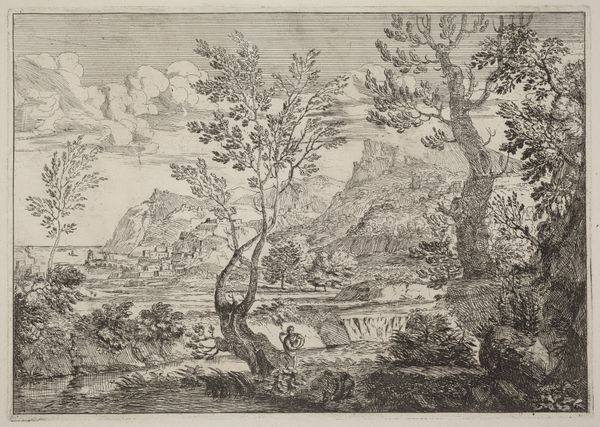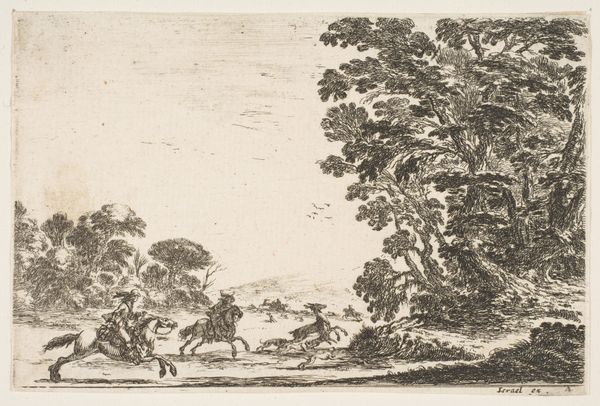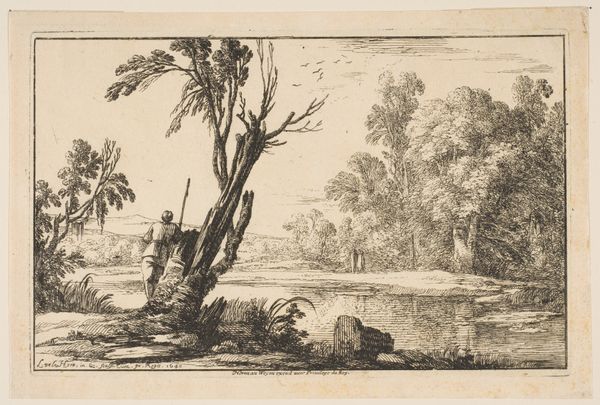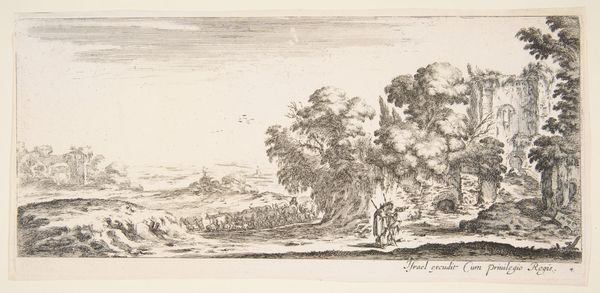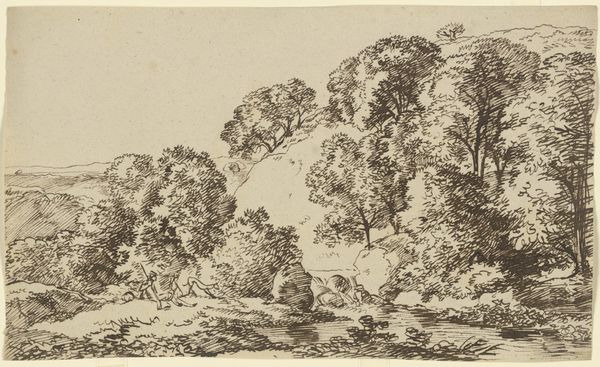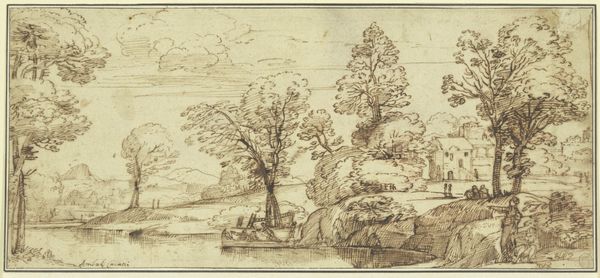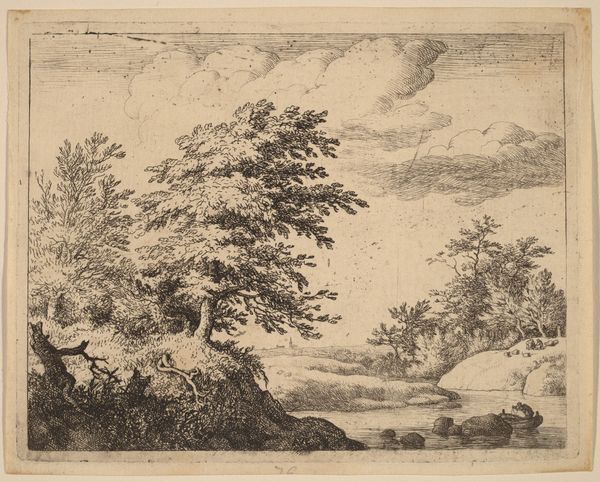
drawing, print, etching
#
drawing
#
ink drawing
#
pen drawing
# print
#
etching
#
landscape
#
realism
Copyright: National Gallery of Art: CC0 1.0
Editor: "Valley in Bourgogne", by Alphonse Legros, created as an etching. It presents a waterside landscape, filled with intricate detail and almost brooding in mood. What's your take on this scene? Curator: Well, consider the timing and context. Legros was working in a period of significant social change in France. Images of rural life were often idealized or used to evoke a sense of national identity. But this doesn't seem like idealization, does it? What feeling do you get from the figures near the water? Editor: They look like they’re working, maybe fishing? But their posture seems almost burdened. Curator: Precisely! Legros, unlike some of his contemporaries, often presented a more sober view of rural existence. His figures are rarely romanticized. Do you think this print might be engaging in the political discourse of the time, subtly critiquing idealized representations of the French countryside? Editor: That’s interesting! So, instead of a picturesque view, he's showing a truer, perhaps tougher, reality? Curator: Exactly. Consider how etching, as a printmaking medium, allowed for wider dissemination of images. Legros was able to make his commentary accessible to a larger public. Does that change how you perceive its purpose? Editor: Definitely. It's not just a pretty picture; it’s a statement. I see now that the medium itself has social implications. Curator: And that’s key. Always think about not only what is depicted, but also how and why. Editor: I never thought about landscapes as being political statements before. This was a really eye-opening perspective!
Comments
No comments
Be the first to comment and join the conversation on the ultimate creative platform.
